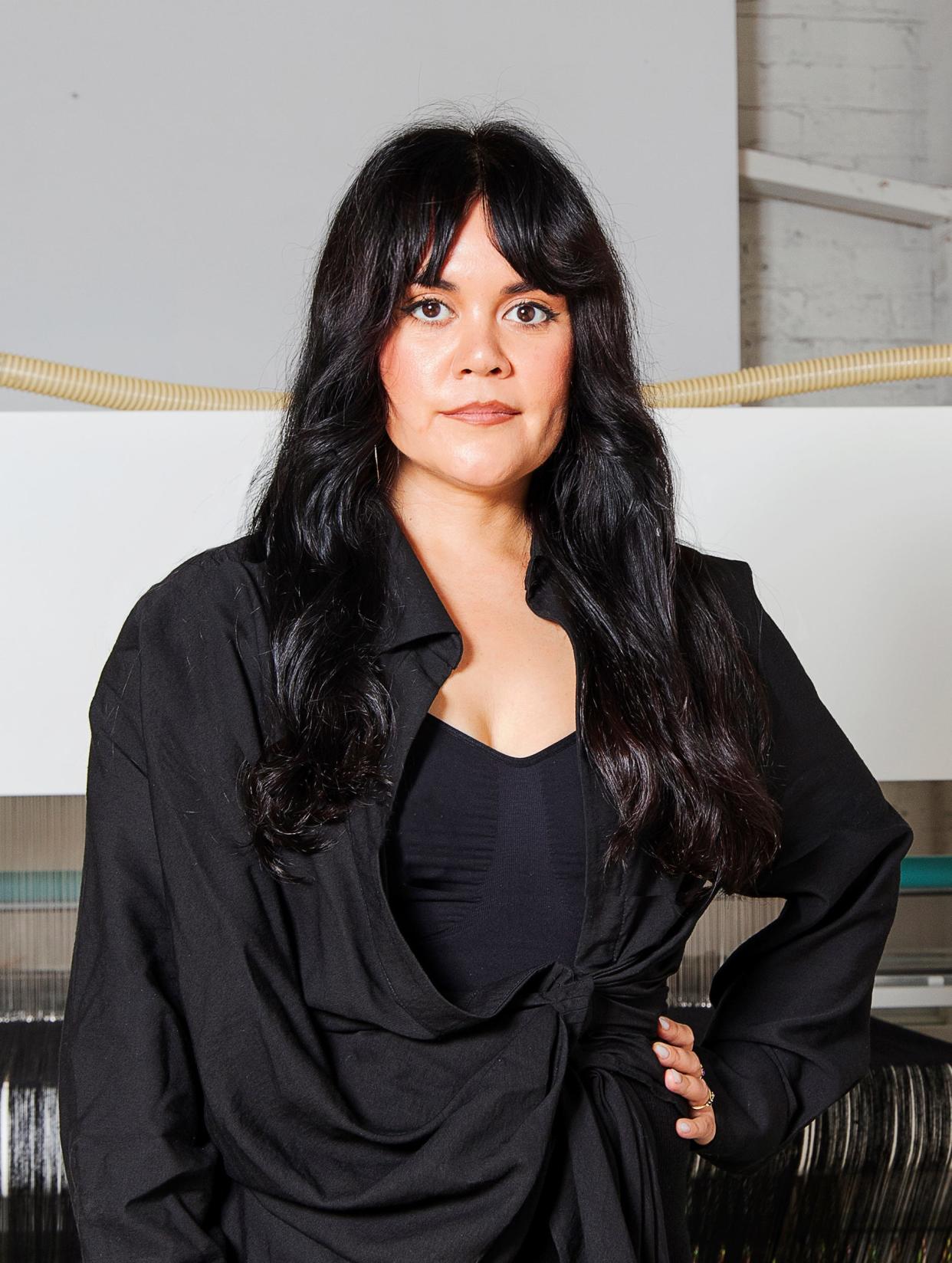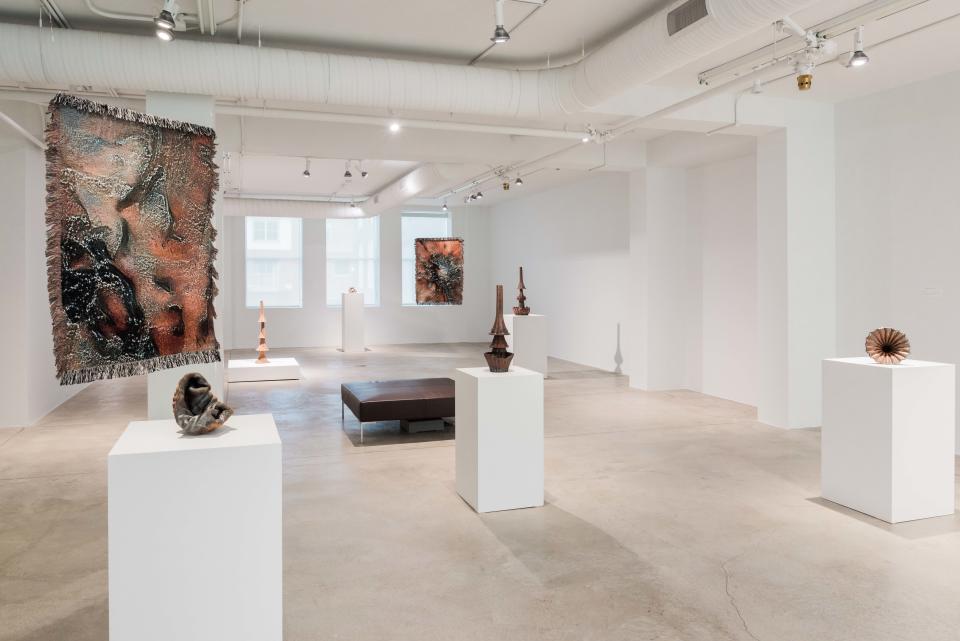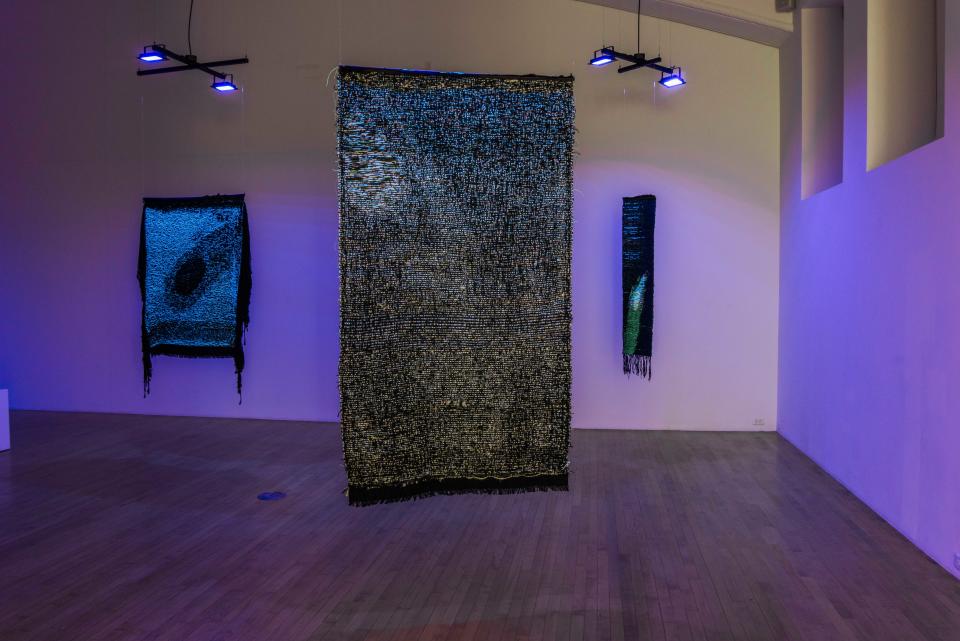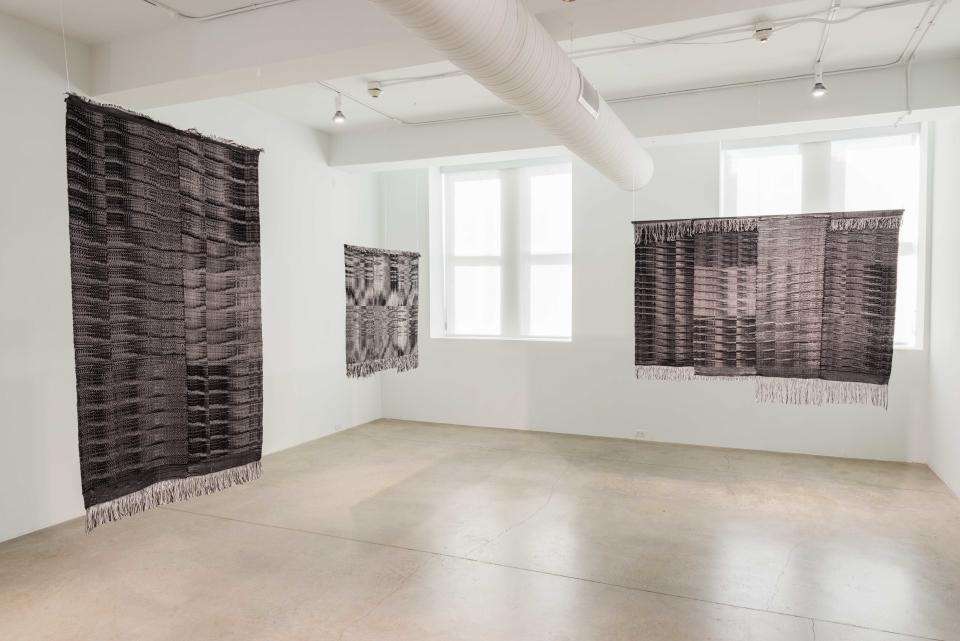Art: The beauty of the stars and indigenous people explored in new exhibit at The Pizzuti

An art exhibit that considers both the cosmos and the contributions of indigenous people would seem to be contradictory or at the very least, made of categories far too broad to merge.
Yet in “Sarah Rosalena: In All Directions,” on view through Feb. 4 at The Pizzuti, notions of space exploration, the brilliance of the stars, ingenious visions of the original Americans and the beauty of their craft not only all cohabit but also create a striking and often startling conversation.

Rosalena — an artist, an assistant professor at the University of California, Santa Barbara, and a member of the indigenous Wixarika people — marries craft with technology in her tapestries and sculptures on view in this multi-layered exhibit. The 35 works, created in the past five years, are presented in the galleries of the Short North-located Pizzuti.
In one gallery are ceramics titled “Transposing a Form” and tapestries titled “Above Below;” all these works consider the pursuit of exploration on the planet Mars. Working with NASA, Rosalena used simulated Martian dirt and three-dimensional printing to create coiled ceramic sculptures that reference both indigenous pottery and the shape of black holes.
The accompanying textiles in this gallery were generated with artificial intelligence based on satellite images of the surface of Mars. These hanging tapestries, beautiful in muted blue and rose colors, have exquisitely different patterns on their fronts and backs.
Using her grandmother’s techniques, Rosalena created beaded plates, reproductions of photographic plates analyzed by women working in the 1920s at Mount Wilson Observatory in California, where Edwin Hubble worked. These plates and another glass bead and thread piece, “Exit VARI,” are almost impossibly intricate.
More: 'Moulin Rouge!': Tony-winning Broadway hit to open in Columbus for two-week run
Rosalena’s “Standard Candle” weavings, which also investigate the mysteries of the universe, are based on algorithm measurements of stars. But you don’t have to know or understand the science behind these gorgeous black, white and gray tapestries to appreciate their shimmering, sparkling beauty.

Because stars are so much more visible at night and away from city lights, one of the galleries has been darkened. Only suspended ultra-violet lamps illuminate these tapestries. Part of the “Standard Candle” series, these works were transformed from imagery found on photographic plates in Mount Wilson Observatory’s archives.
Appropriately, the five tapestries are in the gallery that also includes the Columbus Museum of Art’s enormous Alison Saar sculpture, “Nocturn Navigator” that commemorates the journeys of escaped slaves on the Underground Railroad.
More: Columbus Museum names new executive director and CEO
“In All Directions” was organized by Ohio State University art history associate professor Kris Paulsen and eight of her graduate students who immersed themselves in Rosalena’s art and who created the informative exhibit panels and the accompanying catalogue. The title of the exhibit, according to the artist and curator and mentioned in the press release, “represents the boundlessness of the universe and the irrelevance of compass points in a space beyond measurement.”
Brooke A. Minto, executive director and CEO of the Columbus Museum of Art that owns and operates The Pizzuti, said the exhibit demonstrates how the Pizzuti is used for “integrative, experiential art education.”

Rosalena’s works, Minto said, “use craft as a method of integrating the scientific means by which we have understood our place in the world and investigating how thinking about the cosmos and the expanding frontiers of space exploration relate to the colonial logics that mark our pasts and continue to shape our futures.”
Indeed they do, but in addition, the works are uniformly beautiful and mesmerizing. With or without delving into the science and history behind them, they merit a view.
At a glance
“Sarah Rosalena: In All Directions” continues through Feb. 4 at The Columbus Museum of Art at The Pizzuti, 632 N. Park St. Hours: 10 a.m. to 5 p.m. Fridays through Sundays. Admission: $5, free for age 3 and younger, members and veterans and active military and their families. Rosalena will appear in Columbus with anthropologist and filmmaker Elizabeth Povinelli for a discussion on the intersections of art, craft and indigenous futures at 7 p.m. Jan. 23 at the Wexner Center for the Arts. Call 614-221-6801 or visit www.columbusmuseum.org.
This article originally appeared on The Columbus Dispatch: Art: The cosmos, indigenous people explored in Sarah Rosalena exhibit

